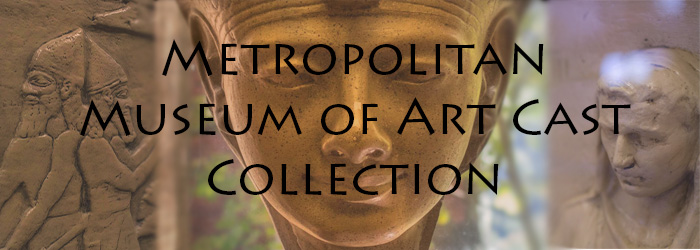
Description
Plaster cast of a small statue of the Pharaoh Amenemhat. Original is housed in the British Museum, circa 1991-1802 BCE (Dynasty XII).
Publication Date
1978
Type of Artwork
Statue
Time Period/Geographical Region
Ancient Egypt
Height (cm/in)
57.15 cm / 22.5 in
Width (cm/in)
17.78 cm / 7 in
Depth (cm/in)
34.29 cm / 13.5 in
Disciplines
Ancient History, Greek and Roman through Late Antiquity | Sculpture
Recommended Citation
Morehead State University. Camden-Carroll Library., "Seated Statuette of Amenemhat" (1978). Metropolitan Museum of Art Cast Collection. 40.
https://scholarworks.moreheadstate.edu/metropolitan_art_collection/40
Files
Download
Download Image (492 KB)


Comments
This statuette, or small statue, was originally executed in grey granite. It depicts the pharaoh Amenemhat, who reigned in the prosperous Twelfth Dynasty. Amenemhat is seated on a throne with an inscription in hieroglyphics, the Egyptian form of writing, located on either side of Amenemhat's legs. In Egyptian art, bodies were standardized according to a strict canon of proportions based on a unit called the cubit. A grid was used by painters and sculptors alike, with different parts of the body corresponding to different squares within the grid. Naturalism was sacrificed for a uniform idealized body. It is through this canonical grid system that Egyptian art remained so consistent throughout the millennia of pharaonic rule.